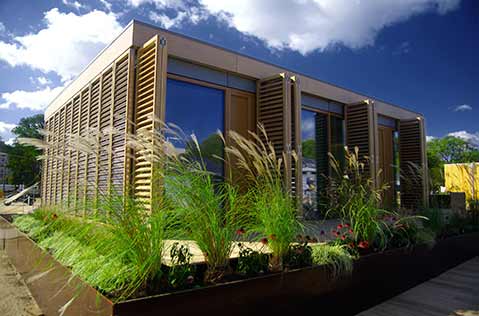The Future of Passive Solar Design
Can this design principle of the ’70s make a comeback, or is it as dead as disco?

Early in my building career, I became a fan of passive solar systems, attracted by their simplicity and modest cost. The five basic tenets of passive solar design are as follows:
- Orient the long axis of the house in an east-west direction.
- Locate habitable rooms on the south side of the house for greater comfort while putting utility rooms, bathrooms, closets, and hallways on the north side.
- Add extra glazing on the south side and almost none on the north side.
- Calculate the roof overhang to shade south-facing windows in summer but to let in the sun’s heat during winter months.
- Incorporate interior thermal mass to soak up solar heat gain coming through windows.
The evolution of super-insulated, super-tight buildings since the 1970s has challenged these principles:
- Because today’s buildings with tight shells need little heat or cooling, orientation is no longer an issue. (In a well-designed house, the energy required for space heating is often less than that required for domestic hot water.)
- Similarly, there is now no energy bonus from placing habitable rooms on the south side. Locate these rooms where the views, function, and aesthetics are most desirable.
- Windows are expensive. Adding extra south-facing windows today does not justify the cost; the heat gathered is too little to warrant the extra expenditure. Investing in other energy-saving measures yields a better return.
- Experience has taught that it is impossible to design a roof overhang that lets the sun in when wanted and keeps it out when unwanted.
- Thermal mass is expensive and often interferes with occupant comfort by being slow to heat up when heat is wanted or to cool off when it is not.
Do these limitations mean passive solar design is dead? As originally conceived, yes. But with modifications, the approach still has merit:
- Disregard the long east-west axis prescription, the extra south-side glazing, and the restrictive guidelines on locating habitable room.
- Manage sun control with exterior motorized moveable awnings (relatively inexpensive) instead of fixed roof overhangs for easy adjusting any time of the day or season of the year.
- Select high-performance, high-solar-gain glazing for south-side windows.
- Add an extra layer of drywall to walls and ceilings for effective, inexpensive thermal mass.
- And, of course, the house still needs to be air-tight and well-insulated.
Passive systems are primarily focused on gaining heat. Thus, it is advisable to balance this leaning with attention to natural cooling. Arrange for prevailing breezes to flow through habitable rooms. Size and location of inlet and outlet openings can actually speed up and enhance the cooling effect of air movement. Opening up a home in the cool morning hours can drop the inside temperature by several degrees and charge the thermal mass with coolness, contrary to our normal concept of it as a heat sink.



